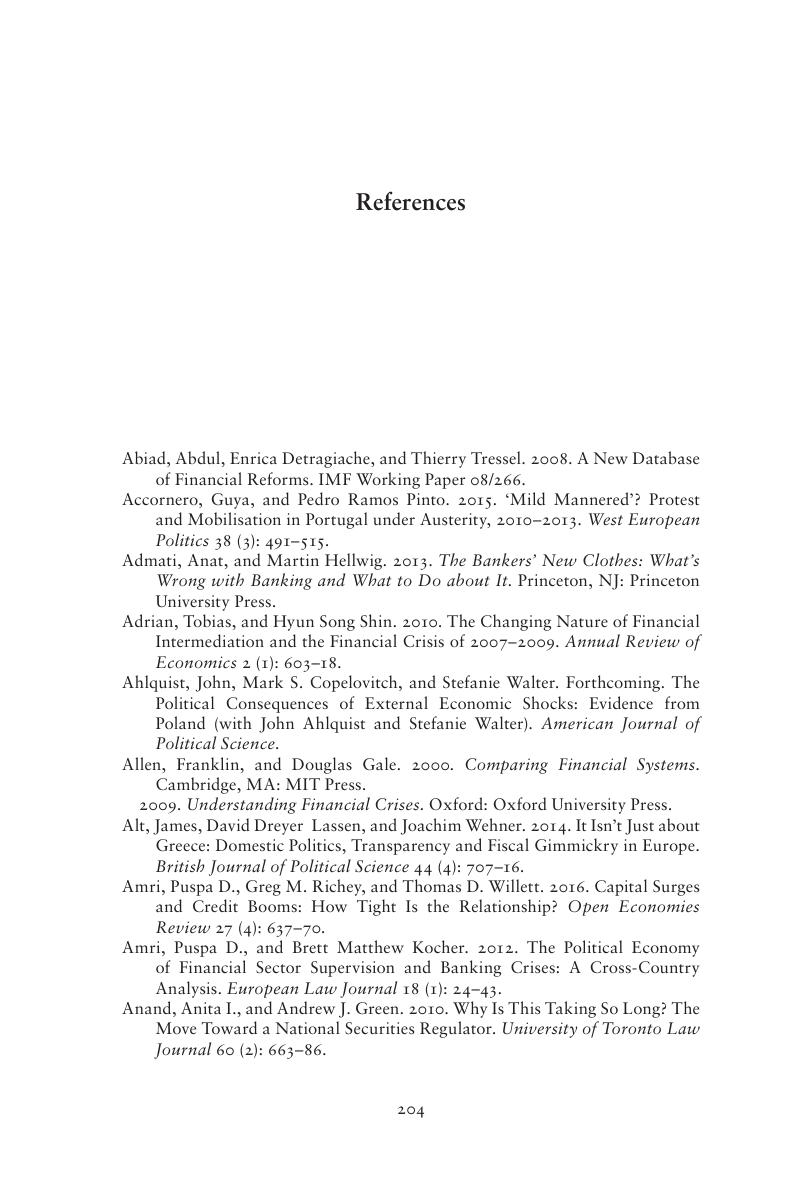Book contents
- Banks on the Brink
- Political Economy of Institutions and Decisions
- Banks on the Brink
- Copyright page
- Dedication
- Contents
- Figures
- Tables
- Preface
- Acknowledgments
- 1 The Politics and Economics of Financial Instability
- 2 Banking Crises, Capital Flows, and Financial Market Structure
- 3 Capital Inflows, Market Structure, and Banking Crises
- 4 O Canada? Unraveling the Mystery of Canadian Bank Stability
- 5 Finanzplatz Deutschland
- 6 Policy Responses
- References
- Index
- Political Economy of Institutions and Decisions
- References
References
Published online by Cambridge University Press: 10 February 2020
- Banks on the Brink
- Political Economy of Institutions and Decisions
- Banks on the Brink
- Copyright page
- Dedication
- Contents
- Figures
- Tables
- Preface
- Acknowledgments
- 1 The Politics and Economics of Financial Instability
- 2 Banking Crises, Capital Flows, and Financial Market Structure
- 3 Capital Inflows, Market Structure, and Banking Crises
- 4 O Canada? Unraveling the Mystery of Canadian Bank Stability
- 5 Finanzplatz Deutschland
- 6 Policy Responses
- References
- Index
- Political Economy of Institutions and Decisions
- References
Summary

- Type
- Chapter
- Information
- Banks on the BrinkGlobal Capital, Securities Markets, and the Political Roots of Financial Crises, pp. 204 - 222Publisher: Cambridge University PressPrint publication year: 2020

